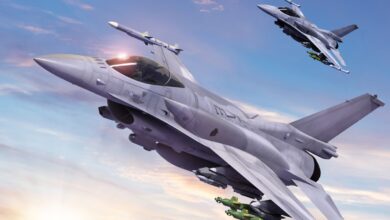US Air Force Demos Assembly, Deployment of 3D-Printed Drones in Under 24 Hours
The US Air Force has showcased its capability to design, assemble, and deploy 3D-printed unmanned aerial systems (UAS) within 24 hours in Florida.
Held at Eglin Air Force Base’s B-70 range, the demonstration was another step in the service’s objective to develop a drone fleet to rapidly distribute supplies to airmen behind enemy lines.
The process took 22.5 hours to assemble six aircraft, including an 8-pound (3.6-kilogram) personnel recovery system, ahead of launch.
The US Air Force wrote that the method was developed by the Air Force Center for Strategy and Technology’s Blue Horizons, a think-tank that promotes unconventional strategies to address tactical requirements.
Among five participating groups under Blue Horizon was the three-person Black Phoenix crew, who also trialed the process at Eglin.
Black Phoenix worked with autonomous systems industry partner Titan Dynamics to bring to fruition cost-effective and rapid UAS design and development.
Titan also provided automated design software for the team to refine the drone’s aerodynamic body based on dimensions, payload, and power requirements in under 10 minutes.

Practical Investment
The air force wrote that the Eglin trial saw some successful flights and crashes, but regardless of the drones’ external conditions, their payload and internal autonomy hardware were unaffected.
The agency said that building and redeployment of the outer UAS structure only required $20 to $50 per reprint.
“We’ve taken big risks this week in flying so many new aircraft for the first time, but the risk is also low because these entire aircraft are built from commercial off-the-shelf items, so the financial investment is small,” Black Phoenix Member Lt. Col. Peter Dyrud remarked.
Bolstering UAS Operability
Before the Eglin flight tests, Black Phoenix initially tested the approach in Southwest Asia. Feedback from this activity was utilized for final field tests in Florida.
Overall findings from these evaluations will be presented to the Air Force Secretary and Chief of Staff offices later this month.
“Small UASs are becoming a new warfighting capability,” Blue Horizons Fellow and Black Phoenix Member Col. Dustin Thomas explained.
“However, the Air Force can’t rapidly change these aircraft based on the threat environment or quickly use new technologies to meet the needs of a specific mission. Our project aims to find ways to change that.”












